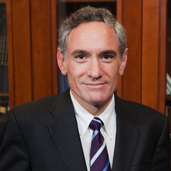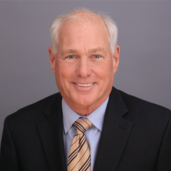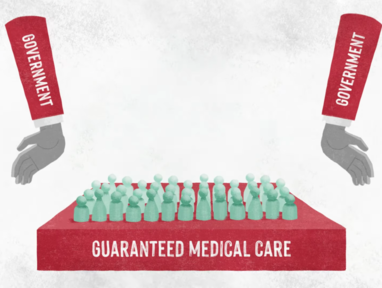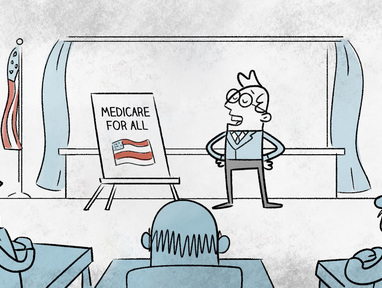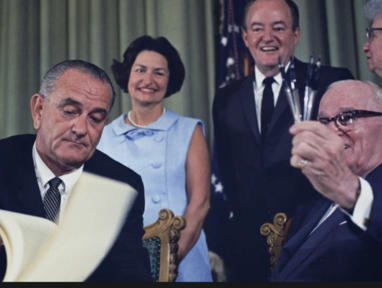Is Government the Answer to Our Health Care System’s Woes?

America’s health care system needs fixing. It is expensive. It is complicated. And these problems seem to be getting worse.
In an earlier edition of Policy Insights, we examined some of the government policies that contribute to the system’s woes. There is the tax code that subsidizes high-premium employer-provided insurance plans, giving consumers, doctors, and other medical providers fewer reasons to appreciate the costs of their health care decisions. There are the many regulations that limit choice and competition in the market, which drive up prices and reduce quality. And there are special rules and reimbursement rates for certain government programs that distort the health care market. The result is the costly and convoluted system we see today.
But although most agree the current system needs improvement, there is little consensus about what to do. Some think the answer is single-payer health care. Others think government can enhance competition and cut costs by directly competing with private insurance companies.
Will these government-led efforts improve our system?
Is single-payer health care the answer?
The proposals go by many names: nationalized health care, single-payer, or most recently, Medicare for All. The details vary, but generally the proposals would replace private insurance plans with a government-run program that would directly pay doctors and hospitals. The program would be funded with new taxes, but proponents argue that these taxes would be less than what most Americans spend on health care today. The reason? The government would be able to negotiate lower prices from doctors and hospitals while cutting administrative costs. The result would be a system that provides high-quality, low-cost medical care to all.
As proof, supporters point to the other countries that have national health care systems. They note that these systems guarantee universal coverage and seem to cost less per capita than the US system. But the details matter. The video below highlights some of the shortcomings of single-payer systems:
As the video explains, while single-payer systems promise universal health care coverage, there is no guarantee that patients will receive timely care when they need it most. To contain costs, these systems ration care and invest less in their health care systems. For example, they purchase fewer MRI machines and have fewer beds in ICUs. The results are often poorer health outcomes. In this paper, Dr. Scott Atlas identifies several policies that single-payer systems use to contain costs. Atlas cites several examples of how these cost-containment strategies lead to worse medical outcomes. Perhaps the most troubling example is how long patients must wait for their first cancer treatment after a diagnosis:
In the United Kingdom, 9.6 percent of breast cancer patients received first treatment within the two-month period after specialist diagnosis, but 30 percent of colorectal cancer patients, 28.2 percent of lung cancer patients, and 29.2 percent of urological cancer patients waited more than two months after “urgent referral” to start therapy. Similarly, 21 percent of brain surgery patients in England wait more than four months after diagnosis to be treated. In Canada’s single-payer system, the most recent data revealed a median wait for neurosurgery, after patients have already seen the doctor, of 32.9 weeks—about eight months.
In comparison, from 2004 to 2013, the median wait time among US patients for the treatment of lung, colorectal, renal, and pancreatic cancers was 27 days after diagnosis. Similar differences in waiting times exist for cataract surgery, the approval of life-saving prescription drugs, and a host of other medical services. In short, single-payer systems may cost less in terms of money spent, but they save money by increasing wait times and reducing quality.
This trade-off might be worthwhile if it means costs are significantly lowered and health care coverage expanded. It is unclear, however, whether a US single-payer system would deliver much cost savings. Under the current US system, hospitals and doctors receive lower reimbursement for Medicare and Medicaid patients than for those with private insurance. Supporters of a single-payer system such as Medicare for All argue that if the care for all patients was reimbursed at the lower levels the government is currently paying, the cost savings would be dramatic. But health care scholars Lanhee Chen and Julius Chen argue that this switch would be painful for hospitals that currently treat privately insured patients:
These hospitals have been reliant on the current system of higher payments from self-insured employers and private payers to support their operations. Thus, broad-based reimbursement at Medicare levels would constitute a major change, as they would no longer be able to price-discriminate or cross-subsidize, and likely lead to significant financial pressure.
Some hospitals would no longer be profitable, and they would have to adopt significant cost-cutting measures or shutter. There would be similar pressure on doctors and other medical providers. Thus, the trade-off between cost and quality discussed above would be seen across the United States. But Chen and Chen argue that, given past behavior by US policy makers, the most likely outcome would be that Congress would succumb to political pressure and raise reimbursement rates for hospital and providers. That might shield hospital and providers from painful cuts, but it would mean that the promised cost savings of single-payer health care wouldn’t be seen.
Watch this video to learn more:
What about a public option?
A wholesale takeover of health care by government is likely too extreme for most Americans. After all, while there is general discontentment about our health care system, many families say they value their own private insurance options. This political reality has led some health care reformers to propose more moderate-sounding changes to the health care system. The leading proposal is a public option.
Under a public option, the federal government would offer a health insurance plan that competes with private offerings. Proponents believe that such plan could offer significant cost savings by cutting administrative costs and reducing payments to hospitals and doctors. Not only would families have an additional, low-cost insurance option, but competition from the public option plan could lead other insurers to reduce their prices. And supporters assert that, unlike single-payer systems, the plan would not require new taxes, because it would be financed through enrollee premiums. The result, they argue, would be a more competitive system with lower prices, higher quality care, and no new taxes.
Like single-payer systems, however, a public option would have a difficult time meeting the promises of its proponents. The purported savings rely on the same math that US single-payer care does: the government will be able to reduce reimbursement rates to doctors and hospitals. But as the video below explains, that’s unlikely to happen without significant disruptions to hospitals, doctors, and patients:
Nor is it likely that public option would be fully financed through enrollee premiums. Lanhee Chen uses the early history of Medicare to show how Congress would likely give in to political pressure and begin to subsidize premiums:
What about expanding existing programs with increased government subsidies?
Even without new programs, federal and state governments will spend close to two trillion dollars on health care subsidies in 2022. Medicare provides health care coverage to over 60 million seniors and Americans with disabilities. Medicaid provides health care to low-income families, disabled Americans, and seniors. And the Affordable Care Act (ACA) provides subsidies to other low-income Americans to purchase private health care. With the public option and single-payer proposals facing significant opposition, some have proposed expanding eligibility and increasing subsidies for these existing programs.
In 2021, for example, Congress temporarily expanded subsidies for the ACA. This included expanding eligibility to some families with incomes above 400 percent of the federal poverty line. Recent legislative proposals would make these changes permanent. Another proposal advanced by the Biden administration would reduce Medicare eligibility age from 65 to 60. These expansions would further increase government spending, but proponents argue they would expand health insurance coverage to the uninsured. It is unclear, however, whether those benefiting from these expansions are the people most in need of assistance. Hoover Institution fellows John Cogan and Daniel Heil looked at the change in ACA eligibility rules. They found that the expansion would benefit people far up the income latter, including families with incomes over $200,000 per year.
Similarly, Hoover Institution fellows Lanhee Chen, Tom Church, and Daniel Heil found that reducing the Medicare age to 60 would largely benefit individuals with existing health care coverage:
The vast majority of those who would become eligible for Medicare already have insurance. In fact, only about 10 percent of the early-eligible population currently lacks coverage. About half have existing employer-sponsored coverage. And almost a quarter of the newly Medicare-eligible under Biden’s proposal already have government coverage through, for example, state Medicaid programs or the Affordable Care Act’s marketplace plans.
Conclusion
There are countless proposals to reduce health care costs by expanding the government’s role in health care. But each proposal generally suffers from the same trade-offs between cost, quality, and coverage. Are there other reforms that can avoid these trade-offs? Stay tuned for the next edition of Policy Insights for potential answers.
Additional Reading
Learn about the problems with our current health insurance system in this edition of Policy Insights.
You can take a deeper dive into the debate about single-payer health care in this 2019 Policy Insights article.




